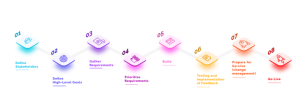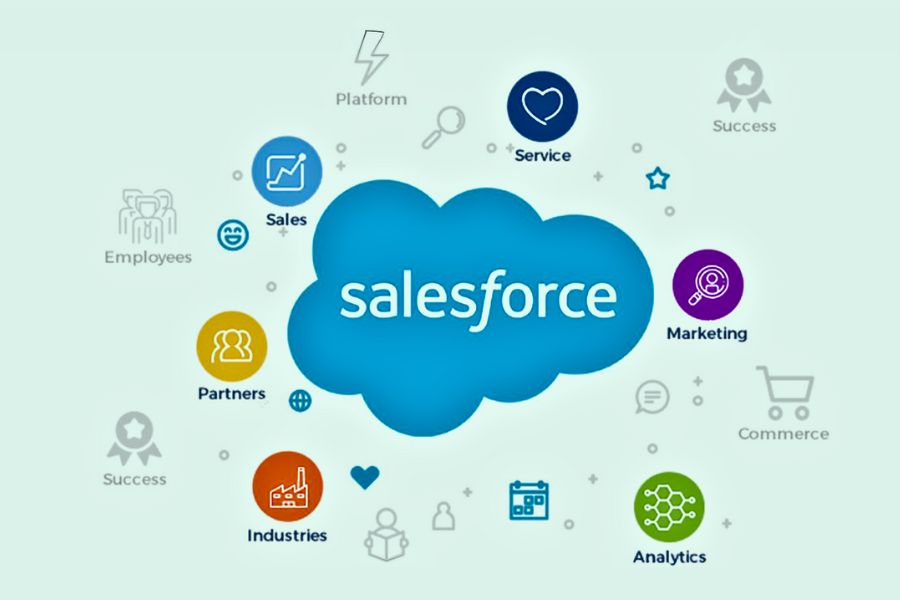Salesforce is widely recognized as one of the best Customer Relationship Management (CRM) platforms. It is a cloud-based software that enables companies to seamlessly connect with their customers. Salesforce provides several offerings that are developed with the objective of managing all the different aspects of any business. Some of the most commonly used Salesforce products are Sales Cloud, Service Cloud, Experience Cloud, Marketing Cloud, Pardot, Revenue Cloud, and Nonprofit Cloud. Clients can leverage any combination of these products to get a complete overview of the operations, sales, finances, marketing, and other data related to their business.
Due to its extensive and flexible nature, a lot of businesses are opting for Salesforce as their choice of CRM tool. Salesforce, if implemented correctly, could significantly increase the sales efficiency which would help companies close more deal, and consequently generate more revenue. However, it is important to understand that it comes with a lot of intricacies and complexities, and therefore, it is recommended to consult Salesforce Partners with a fair bit of experience in such undertakings.
A successful Salesforce implementation requires proper planning and a lot of commitment. You can set the ball rolling by acquiring the appropriate Salesforce licenses to begin the implementation process. The implementation requires a cross-functional team which ideally consist of a project manager, a Salesforce consultant, and some Salesforce developers. But not all companies have the perfect blend of employees for such a sizeable project – especially ones that are just getting started.
That’s where Salesforce Partners like Selectiva Systems come in. Selectiva Systems is a certified Salesforce Partner that can provide you with quality solutions to your business needs quickly and efficiently. We have been working with Salesforce for over years and propose solutions based on our past experiences – both positive and negative.
Here’s a brief overview of how we execute our Salesforce Implementation Process.

We start off with defining the stakeholders by identifying all the people and entities relevant to the project. This includes project managers, super users, business users, and decision makers. We must also define the roles and responsibilities to avoid any ambiguity.
Once the stakeholders are defined, we work with them to define a high-level goal for the project by determining the inefficiencies and pain points in the current processes. Simultaneously, we also make a note of which processes run optimally so they can be mimicked into the new system as it is.
Next, we gather all the requirements and document it accurately. This step is of utmost importance and, therefore, it is imperative that there are no ambiguities with regards to the requirements that are finalized. We place high emphasis on the usage of consistent terminology and try to stick with the industry standards. Often, we also list naming conventions in a glossary whenever necessary.
Once the requirements are locked in, we need to prioritize them. We recommend splitting the requirements into three categories – ‘must-have’, ‘should-have’, and ‘nice-to-have’. All the requirements listed under the ‘must-have’ category are non-negotiables and have high priority. Implementing them will ensure that the business can continue to run with minimal configuration. Whereas the requirements listed under ‘should-have’ can be classified as medium priority. They may be supplements to core business functions and should ideally be implemented before the project goes live but will not significantly affect the system if the team fails to do so. Finally, there are requirements that are simply nice to have. They might involve beautifying the UI or adding functionalities that make operations more convenient. They have the lowest priority since they do not affect the rest of the system in any way and can be implemented even after the project is live.
Once we are past these first few tedious steps, we dive straight into the most interesting part – the implementation! At this stage, the internal team will begin configuring the requirements in a sandbox environment. This is a lengthy process and will be executed in iterations based on the priorities assigned to each requirement. It is also recommended to document your progress along the way.
Ideally, as soon as the high priority requirements are implemented, we get in touch with our clients to provide them a demo of the draft solution in the sandbox environment. The clients then review the solution, test it, and offer their feedback on the draft solution. Then, we compare the feedback with the original scope and determine what is within the scope and needs to be fixed or implemented immediately. We also make a note of whatever is out of scope and decide whether to push it to the next phase or implement it right away. Once a decision is made for every requirement, we resume implementation. This would also be a good time to ask end users to begin their voluntary Salesforce training on Trailhead, so they are comfortable navigating through their SFDC instance once it goes live.
Once we iron out all the wrinkles, it is time for deployment. Finally, we highly recommend doing a quick run-through of all the key functionalities to ensure that the entire system is working as expected.





